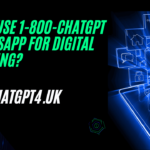How Does GlasgowGPT Enhance Natural Language Processing and Understanding? Natural Language Processing (NLP) has revolutionized the way we interact with machines and computers. From virtual assistants to language translation and sentiment analysis, NLP has opened up a world of possibilities.
One of the latest advancements in NLP is GlasgowGPT, an advanced language model developed by the University of Glasgow. In this article, we will explore the capabilities of GlasgowGPT and discuss how it enhances natural language processing and understanding.
Understanding Language at a Deeper Level:
GlasgowGPT has been designed to understand human language at a deeper level, enabling it to comprehend complex sentence structures, nuances, and even context. By utilizing a large pre-training dataset and a powerful transformer-based architecture, GlasgowGPT has significantly improved the ability to understand and generate natural language. This enhancement allows for more accurate and contextually relevant responses.
Contextual Understanding and Disambiguation:
One of the challenges in NLP is the ambiguity of language. Words and phrases can have multiple meanings depending on the context in which they are used. GlasgowGPT tackles this challenge by leveraging contextual understanding and disambiguation techniques.
It takes into account the surrounding words and phrases to infer the intended meaning accurately. This capability enables the model to provide more precise and contextually appropriate responses, enhancing the overall user experience.
Improved Language Generation:
Language generation is a crucial aspect of NLP, and GlasgowGPT excels in this area. The model has been trained on a vast amount of textual data, allowing it to generate coherent and contextually relevant text.
Whether it’s composing an email, generating code snippets, or creating conversational responses, GlasgowGPT demonstrates remarkable proficiency. The enhanced language generation capabilities of GlasgowGPT make it a valuable tool in various applications, including content creation, customer support, and creative writing.
Also Read: Why Does ChatGPT Need Phone Number?
Multi-Modal Understanding:
In addition to textual input, GlasgowGPT has been extended to understand and process other forms of data, such as images and audio. This multi-modal understanding enables the model to interpret and generate responses based on a combination of visual and textual cues.
For example, it can analyze an image and generate a descriptive caption or answer questions related to the image content. By incorporating multi-modal understanding, GlasgowGPT expands the possibilities for NLP applications and offers more comprehensive and interactive experiences.
Domain-Specific Adaptability:
Another notable feature of GlasgowGPT is its ability to adapt to different domains and specialized contexts. By fine-tuning the model on specific datasets or task-specific objectives, GlasgowGPT can be tailored to excel in specific industries or fields.
For instance, it can be fine-tuned on medical literature to assist with medical research or trained on legal documents to aid in legal document analysis. This adaptability enhances the accuracy and relevance of the model’s responses within specific domains, making it a versatile tool for various applications.
Ethical Considerations and Bias Mitigation:
As with any AI model, ethical considerations are crucial. GlasgowGPT aims to address the issue of bias by training on diverse and representative datasets. The development team puts effort into ensuring the model is fair, unbiased, and inclusive. By actively mitigating biases, GlasgowGPT aims to promote the ethical and responsible use of NLP technology, fostering a more equitable and inclusive digital environment.
Conclusion:
GlasgowGPT represents a significant advancement in natural language processing and understanding. Its deep contextual understanding, language generation capabilities, multi-modal understanding, domain-specific adaptability, and ethical considerations make it a powerful tool in various NLP applications.
As the field of NLP continues to evolve, GlasgowGPT paves the way for more sophisticated and accurate language models, improving human-computer interaction and driving innovation in numerous industries.
FAQs
How does GlasgowGPT improve natural language understanding?
GlasgowGPT improves natural language understanding by leveraging deep contextual understanding and disambiguation techniques. It takes into account the surrounding words and phrases to accurately infer the intended meaning, providing more precise and contextually appropriate responses.
What are the applications of GlasgowGPT’s language generation capabilities?
GlasgowGPT’s language generation capabilities have various applications. It can be used for content creation, customer support, creative writing, code generation, and even composing emails. The model generates coherent and contextually relevant text based on the input it receives.
How does Glasgow-GPT handle ambiguity in language?
Glasgow-GPT handles ambiguity in language by considering the context in which words and phrases are used. By analyzing the surrounding words and phrases, the model can disambiguate and infer the intended meaning, leading to more accurate and contextually appropriate responses.
What is multi-modal understanding, and how does GlasgowGPT utilize it?
Multi-modal understanding refers to the ability to process and interpret multiple types of data, such as text, images, and audio. Glasgow-GPT has been extended to understand and generate responses based on a combination of visual and textual cues. For example, it can analyze an image and generate a descriptive caption or answer questions related to the image content.
Can Glasgow-GPT be adapted to specific domains or industries?
Yes, Glasgow-GPT can be fine-tuned on specific datasets or task-specific objectives, allowing it to adapt to different domains or industries. By fine-tuning the model, it can excel in specialized contexts, such as medical research or legal document analysis, enhancing the accuracy and relevance of its responses within specific domains.
How does Glasgow-GPT address bias in language processing?
Glasgow-GPT aims to address bias by training on diverse and representative datasets. The development team puts effort into ensuring the model is fair, unbiased, and inclusive. By actively mitigating biases, Glasgow-GPT promotes ethical and responsible use of NLP technology, fostering a more equitable and inclusive digital environment.
How can Glasgow-GPT contribute to the advancement of natural language processing?
GlasgowGPT represents a significant advancement in natural language processing by offering improved language understanding, generation, multi-modal understanding, and domain-specific adaptability. By pushing the boundaries of what language models can achieve, Glasgow-GPT paves the way for more sophisticated and accurate NLP applications, driving innovation in various industries.







